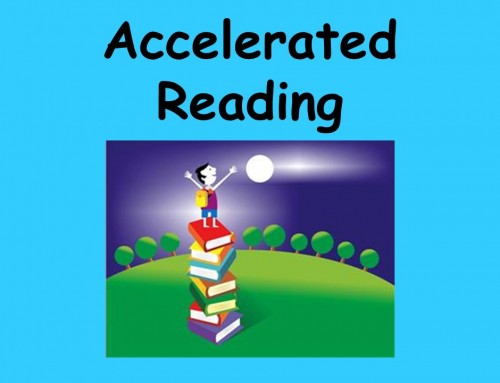Money. No matter how you look at it, on some level, you need it.
You need it for shelter. You need it for food. And you need it for a zillion other things that make life a little more convenient and enjoyable.
Whether you love it or despise it, it’s part of life and the sooner you learn how to make it, manage it and make it grow, the sooner you begin to enjoy its potential to fill your life with experiences that bring joy to you and those around you.
The ability to manage money wisely directly correlates to the ability to live independently and successfully, so it’s no surprise that there are hundreds of financial literacy curriculums available to empower children with the critical financial tools and information they need.
The challenge with most of those curriculums, though, is making them fun and effective.
Most financial literacy curriculums are flat out boring. They are missing the one component that makes them effective…a profoundly unique delivery method.
Key Component: The Delivery Method
We’ve all experienced exciting, mind-stimulating presentations that made learning fun and easy and we can all point to those that were boring and irrelevant that served as merely a means to catch up on doodling practice or missed sleep.
Creating a stimulating learning environment in which to teach financial education to kids and teens has its particular challenges.
Not only it is challenging to convince kids they need to know this information NOW but we’re teaching to generations of children who are used to being entertained.
Given these challenges, how DO you make financial education fun and effective for kids of any age? We’ve found the answer: use Accelerated Learning!
The Key to teaching kids and teens: Accelerated Learning
Accelerated Learning (A.L.), also referred to as Passive Learning, is the most advanced teaching and learning method available today. It’s the most powerful tool available for speeding and enhancing both the design process and the learning process. Based on the latest brain research, it has proven again and again to increase the effectiveness of learning while saving time and money for the instructor.
Accelerated Learning, in a nutshell, is TEACHING to all three learning styles (visual, auditory, and kinesthetic) USING all three learning styles and doing it in an environment that both enhances and encourages learning.
Effective Accelerated Learning techniques makes learning any kind of information fun, enjoyable and easy to remember.
So, since Accelerated Learning makes teaching any topic easier and more effective, let’s look at how we can apply this methodology to make financial education work for you.
There are basically 10 components of Accelerated Learning you can apply to make any financial literacy program fun and effective for your students, regardless of age!
Note: The following information is completely relevant for speakers, presenters, teachers or coaches in the financial education arena. The techniques work with all ages and with all topics.
Ten Components Of Accelerated Learning
ONE: Make it Relevant
Human beings generally have no interest in learning that which they don’t see as relevant to their lives in some way. We all know what happens when we put people in an environment where they are asked to learn something they don’t want to learn or aren’t interested in. They start talking to each other, fidget, figure out ways to leave, daydream or doodle in their notebooks.
It’s even more obvious with children. If you ask them to sit and watch something or listen to someone talk for any period of time, they wiggle and squiggle, roll their eyes, talk and ask lots of questions like, “Is it over yet?”
Yet put them in front of something that they find interesting, and even a two-year-old will sit still.
Topics must be made relevant and interesting or the information falls on deaf ears, and eyes. Even if YOU think the information is absolutely necessary, if it isn’t relevant to the one you want to teach then you are wasting everyone’s time and energy.
So how DO you make financial freedom and security relevant to an 8-year-old or a 12-year-old or even a 16-year-old? Great question.
The answer involves going into their world. In order to figure out how to relate what you want to teach them, you must understand what it’s like to be 10 or 12 or 16. Only then can you begin to shape your message in a relevant way that will reach out and grab them.
Find a way to relate it to their lives. You can start by asking them what matters!
TWO: Enroll Them
Once you figure out how to make your financial education program relevant, your next step is to enroll them in the idea of learning. Enrolling is how you ‘hook’ your audience; get them to want to be there. When your audience is properly enrolled, they are ready to learn.
Here are three basic verbal methods the professional experts use to enroll their audiences:
1) Enrolling Questions & Scenarios.
Asking your audience a couple of relevant questions can immediately get them involved in the subject matter. Raise YOUR hand and get them to raise THEIR hand in agreement. Enrolling questions usually come in pairs and your goal is to enroll 100% of the audience. Sometimes this means thinking on your feet!
In a course about money, you might ask…
“How many of you like to spend money on things that you want?”
“How many of you want to grow up to have all the money you want and need so you can live the way you want to?
You can also use something like this…
“Imagine just for a moment, waking up every morning with the ability to do whatever you want. If I told you I had the secrets to that kind of life, would you want to learn them?”
A simple way to enroll children, in particular, is to invite them to visualize a particular situation and ask for their advice and feedback about how they would handle the situation. A good example would be “wanting a new pair of shoes but not having enough money” or “having a friend who asks you to borrow money”. The more we can invite them to role-play situations that help them experience “financial risk”, the better they will be prepared to handle those situations. Another scenario would be asking children to visualize what they will be like when they are older. Ask who will be paying for their food when they leave home, who will buy the gas for the car, stuff like that.
Bottom line…ask questions that will eventually reach 100% or your audience.
2) Announcements with meaning.
This is a way to reconnect with someone who has mentally left the room and “jar” them back into the program. An announcement goes something like this: “I was sick and tired of being broke!” or “The time is NOW!”
Bottom line…make announcements with a strong conviction.
3) Staggering Statistics.
This type of enrolling method involves using well-researched statistics. The statistic you use must be 100% true or you will lose your credibility. The statement is used to get your audience’s attention.
Perhaps something like…
“Our country is currently in debt to a tune of over $11 Trillion dollars!”
“College students are moving back home at an unprecedented rate!”
“College students are graduating with $_________ in credit card debt, with no ability to make the payments.”
Along the same lines, don’t hesitate to provide a group of children or teens with real statistics…
• like the fact that it takes approximately $300,000 to raise a child from 0-17.
Then ask them how many children they want to have!
• like how much they’ll end up paying for that first new car they finance.
Ask them if they think the car was really worth it?
• like how much buying a $4 coffee drink adds up to over 40 years at 10% interest.
Ask them if they’d rather live on that money later or drink it once.
Bottom line…startle them with facts!
Regardless of which methods you use, be concise, powerful and full of conviction. Pay attention to the response you get from your enrolling methods so you continue to modify for each presentation or class. You will quickly find that the more time you spend crafting your enrolling questions, the better and more effective your teaching experiences are for your students.
Bottom line…find a way to hook them and you’re half way there.
THREE: Make it Interesting
Here’s how you know when a child or adult is bored…they LOOK bored! It’s simple…no matter how interested they might be in the topic before you started teaching, if they are bored, you might as well forget about it.
There are some very simple ways to make learning anything interesting. Here are a few:
1. Ask Questions. Because questions hook the mind and keep us engaged, our brains stay active thinking of the answers to questions and problems that are thrown our way. Have them answer the questions out loud by raising their hands.
Two critical parts of this type of instruction are often left out. First, make sure you acknowledge the person for asking the question. Second, thank the person after the question is answered. Asking for a round of applause also keeps the energy high and makes the person feel great.
Tip: When someone asks a question, before answering, ask the audience if someone knows the answer. If they do, acknowledge that person by asking for a round of applause or snaps (see Celebrating Section).
2. Ask, Don’t Tell. Before ‘teaching’ anything, find out if a member of the audience knows the information first. It’s very common for someone in the room to know the information you are teaching and this will acknowledge them as well as involve the rest of the audience in the conversation. It’s great when the presentation isn’t all about the presenter!
3. Use Stories and Metaphor. Nothing is more attention getting than a great story. Weave the information or lesson into a story with a character they can relate to and you’ve got a winning combination. Craft the character to be the same age as your audience, with similar interests, concerns, likes and dislikes. Decide well in advance exactly what the character will do in the story in order to learn whatever it is you want your audience to learn.
FOUR: Make it Active and Interactive
There is saying that goes like this, “Everything is energy.” If you’ve taught anyone at all, you understand the importance of keeping the energy high in the room, for yourself AND your learners. And this goes with any age…young to old.
Studies show that most people learn better and remember more when they’re moving in one way or another. Incorporating the information into a physical activity helps make it easer to learn and more fun to teach and keeps the energy high for those involved.
In addition, because human beings are relationship oriented, provide plenty of opportunity for students to learn from each other and share their own experiences. This type of educational environment helps kids know they are not alone. And sometimes it’s just more fun to learn things as a team.
One way of making it interactive is to consider your programs ‘conversations’ instead of lectures. When you have a conversation with someone, you talk, they talk, and on and on.
A great way to do this in a controlled way is to use CALLBACKS. A callback is when you say something and then immediately ask them to repeat the information. An example might look like this…
“So, one of the most amazing ways you can invest for your future it to put money in the stock market. WHERE can you put money?” And they say, “Stock market.”
or…
“The three assets most wealthy people invest in are real estate, the stock market and businesses. WHAT are the three ways?” They say, “Real estate, stock market and business.”
You can also do it this way…
“One of the most important habits you can do with money is to Pay Yourself First.” Say that whole sentence with me. And they will repeat it.
It takes a bit of practice but it’s an powerful way to not only get them to remember what you’re teaching but to stay involved and engages.
One additional way to keep the energy high in a learning environment is to be very aware of these three states: physical, emotional and mental. If you sense that the energy in the room is going down, all you have to do it change ONE state and you’ll change all three. Because learning is incredibly ‘state dependent’, learning to recognize and change your learners states is one of the most valuable skills you can learn and use.
FIVE: Make it Experiential (full of feeling)
Experiential teaching means letting the learner physically or emotionally experience what you’re trying to learn. In the case of teaching kids about earned income, for example, you can physically hand them money for something they traded their time and energy for as well as money for something they did that might pay them over and over again (write a book, buy a rental property, invest in a stock that pays dividends). That simple gesture of handing them money elicits internal responses that will help embed the information.
SIX: Teach to All Three Learning Styles
Most people learn visually, auditorily or kinesthetically or a combination of any two or three. This means we learn by seeing, hearing and feeling, both physically and emotionally.
Teaching to all of these learning styles helps ensure that every student receives the information in a manner they can process best.
As an example, when you say, “There are five ways…”, use your hand to illustrate the number five as well as write the number 5 in a bright color on a flipchart or dry-erase board.
Hint: Be BIG. If you want someone to move 6″, you have to illustrate this by moving 12″. Use your whole body when you teach. Be excited and inspiring if you want your students to be excited and inspired.
SEVEN: Repetition, Repetition, Repetition
When YOU say something, it’s one thing. When you get your students to say something, it’s a completely different story. When THEY say it, it’s locked into their minds in a more profound way.
Many people don’t learn the first time they are exposed to a concept, idea or piece of information. Think of your teaching as ‘exposing’ them to information and know that it takes often takes repetition for information to sink in. As an example, in a financial literacy workshop, have your students repeat sayings and principles like Pay Yourself First over and over again.
Hint: put principles on large colorful pieces of paper and hang on the wall. Give students a reward every time they hear the principles, run up and point to the principle and make the other students recite the principle out loud.
EIGHT: Make it Catchy
Think of a commercial that you have found yourself repeating. “Two all beef patties special sauce lettuce cheese pickles onions on a sesame seed bun,” probably brings up an image of the classic McDonald’s Big Mac in the hearts and minds of most Americans.
Ask yourself how you can turn the information you’re teaching into catchy phrases, poems, and songs. Make information rhyme or fit into a pattern and, just know, that the funnier you make it, the easier it is to remember.
NINE: Make it FUN!
Laughter is not only the best medicine…it’s the best learning method. Think of a time when something was really funny to you. Do you remember what was going on? Chances are you do.
Put the concepts and information you want to teach into a game or activity that makes your students laugh and you’ll never have to ‘teach’ it again. When you do this, your learners end up learning as a result of the game or activity; it becomes a natural result of the experience. You literally weave the lessons into the activity and before you know it, they’ve got it.
Note: They don’t always understand what they have just learned, but at least you’ve got it in their little computer brains where it will stay and be processed until it’s needed at a later date.
TEN: Celebrate!
Imagine being acknowledged every time you raised your hand with an answer to a question your teacher just asked. Think about what it would feel like to have an entire group of people snap their fingers three times just because you stood up to ask a question or make a comment. Visualize how inspired you’d feel if the teacher said, “Great Job!” just because you participated in an activity.
Wouldn’t you be more inclined to stay involved in the learning environment? Wouldn’t you WANT to participate? Wouldn’t you WANT to show up, ready to play, eager to learn?
This is only a partial list of benefits from celebrating learning. If it’s good for a football team, it’s good for your classroom.
End Result: Making it Sticky
All of these teaching ideas, combined with the power of accelerated learning, makes the information STICKY. Students learn faster, remember more and have a whole lot of fun learning information that would probably be boring and ineffective in any other setting.
Leaving home and school with financial wisdom is critical to every child’s success as they forge their own way in the adult world.
By using these teaching tips to teach financial education, you not only improve the chances more of our youth living happy, successful adult lives but you can know that you’ve been a huge part in that success. And isn’t that every teacher’s dream?
BONUS TIP: Use financial literacy as a platform to teach everything else.
Do you want to really make learning relevant to your students? Great…think about this.
What if children learned how to read by studying business plans, reading articles about life and health, writing book reports on success journals of all types?
What if children learned math by creating budgets, learning to shop smart, researching stocks and creating financial statements?
What if children learned to write by writing business plans and advertising copy, business correspondence and hand-written personal letters?
What if children learned art and music by creating graphics, websites, composing advertising jingles and more for businesses they create?
THIS would make education relevant, experiential, effective and fun! It would be education that would stick with your child forever, giving them a lifetime of skills and information to make, manage and multiply their money wisely. The result? An adult who is financially responsible and who understands the power and value of doing good in the world.
THIS is how we change the world…one child at a time!
For more information on YOU can learn how to teach your financial literacy programs in the most amazingly affective way, check out www.creativewealthintl.org/trainthetrainer.php.
And remember, if you’ve purchased The Money Game, you get 50% off the normal Train-the-Trainer program!





Leave A Comment